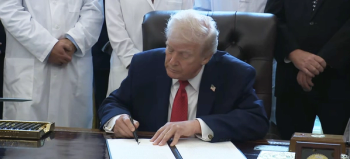
Southern Illinois University Carbondale Students Work to Ensure Proper CBD Labeling
The Southern Illinois University (SIU) Carbondale (Carbondale, Illinois) has formed a project that allows students to research the accuracy of Cannabidiol (CBD) products, ensuring consumers are receiving exactly what is found on CBD product labels.
Students at the Southern Illinois University (SIU) Carbondale (Carbondale, Illinois) are working on a project that aims to promise consumers that they are getting what they pay for when purchasing cannabidiol (CBD) products (1). Students from all over are able to take part in the university’s Research Experiences for Undergraduates program, which is funded by the National Science Foundation. The program funds students to visit other universities to conduct research.
Roberto Santos-Torres came to SIU from a university in Puerto Rico this summer and worked with two other researchers, Mary Kinsel and Gary Kinsel, utilizing some of the university’s high-tech analytical equipment to examine various CBD products to verify their active ingredients. The project investigated the accuracy of product labelling on hemp-derived consumer products such as CBD tinctures intended for humans and pet consumption, CBD gummies, and topical CBD creams.
CBD found in both cannabis and hemp plants does not populate a “high” effect or any other form of intoxication that may be caused by another cannabinoid, tetrahydrocannabinol (THC). It is marketed as a stress reliever, sleep aid, pain reliever, and holds many other beneficial health uses.
The Food and Drug Administration (FDA) has reported large amounts of hemp products that do not contain the active ingredients in the amounts listed on their respective product labels. Those involved in the cannabis industry wish to see standardization implemented throughout the industry from analytical testing to extraction processes.
“It is problematic when the public cannot trust that the product labelling is accurate,” said Mary Kinsel, associate scientist in the Office of Sponsored Projects Administration at SIU (1). Along with Gary Kinsel, vice chancellor for research, Mary Kinsel guided Santos-Torres as he learned practical laboratory skills, such as instrument calibration, standard preparation, and extraction of samples combined with liquid chromatography separation and mass spectrometric detection of cannabinoids.
As with many states throughout the United States, Santos-Torres’s home in Puerto Rico is growing interest in the medical cannabis sector. Mary Kinsel brought up the suggestion that Santos-Torres look into the emerging problem of labeling issues. “I was delighted, since it was a project that could start on my island before I got to SIU,” he said (1). “I hope this study can clarify the problem that currently exists with the label content of CBD products, and for the FDA to be more rigorous with this market.”
His first step was preparing standard solutions of five different known CBD concentrations. This provided a way to measure the CBD content of the consumer products. Once the stock solution with a known concentration of CBD was prepared, it was then diluted to make standards of the desired smaller CBD concentrations.
Through planning out the instrument response of each CBD standard signal against the known concentrations, the researchers applied an equation to the data which could be used to determine the CBD concentrations in the consumer products.
Working together with the Kinsels, Santos-Torres learned to operate one of SIU’s liquid chromatograph mass spectrometers, using it to separate the CBD from other components extracted from the consumer products. Two detectors—a UV-vis photodiode array detector recorded light absorption and a mass spectrometer which recorded positive ions—detected the CBD levels.
“Roberto took the two types of data, measured the area of the CBD signals, and calculated the amount of CBD using the standard calibration equations,” Mary Kinsel said (1). “We repeated the extractions up to three times to calculate an average amount of CBD for the CBD consumer products.”
This project laid the groundwork for future work beginning this fall which will be continued by Chloe Leonard, a senior in physiology at SIU. She opted to study under Mary Kinsel after taking her “Introduction to Forensic Science” course in the fall of 2020. “I was very intrigued by her research and asked if she had any openings for undergraduate research,” Leonard said (1). “She was kind enough to allow me to join her this semester in the lab and presented the idea of furthering Roberto’s research.”
Leonard believes this will give her a better understanding for potency testing and proper laboratory procedures that she could use in the future. She will repeat Santos-Torres’ work with the objective of identifying extraction efficiency by adding known quantities of CBD to consumer products and then extracting it to measure how much can be recovered. These results will help optimize the extraction method.
“During this semester, we expect her to validate the extraction processes we came up with and carried out this summer,” said Santos-Torres (1). “After that, she’ll continue to examine more CBD products.”
As the project continues, the research that will come from it will hopefully be able to aid consumers in choosing the best and most accurate products to treat their various health conditions.
Reference
Newsletter
Unlock the latest breakthroughs in cannabis science—subscribe now to get expert insights, research, and industry updates delivered to your inbox.




